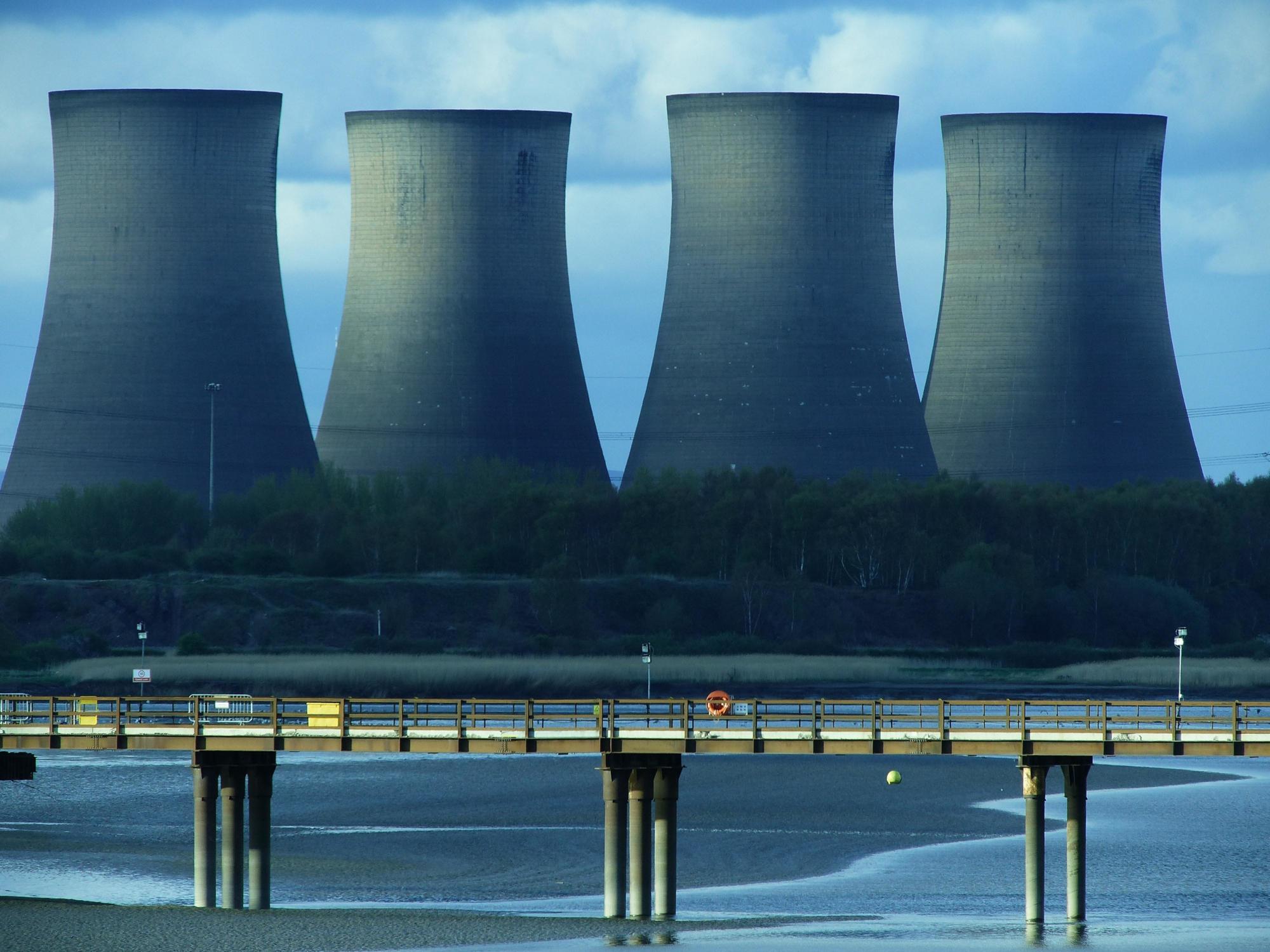
Blog post
Our toxic legacy to the future, the shameful secret of the nuclear industry
Energy Blog, 25 February 2022
One of the unexpected features of Zoom calls during lockdown has been the emergence of competitive book casing; people arranging the titles in their backgrounds to make them look more intelligent than they actually are. To make myself appear suave and urbane, I have replaced my tatty collection of Bill Bryson books with an old Roman lamp which I bought on eBay for GBP 30. This now proudly takes centre place in the background to my calls. Although it is only an unassuming bit of red pottery, it physically connects me to a civilization that died out over 2,000 years ago. This has had me wondering what our generation will leave behind for our distant descendants and depressingly, I think the main thing that survives us will be the nuclear waste from power stations and submarines.
On paper, nuclear power is a great idea. The astonishing potential of the simple equation E = mc2 means that we can create almost limitless power out of uranium twenty-four hours a day without any emissions. There are currently 440 nuclear power stations operating in the world and 150 decommissioned ones (although a couple of these, Three Mile Island and Chernobyl were decommissioned rather more rapidly and earlier than planned). These reactors collectively have a capacity of 400 Giga watts of electricity and in 2020, they contributed 10% of global consumption saving millions of tonnes of CO2 emissions.
So far so good but the big snorty elephant in the corner of the room of course is the fact that these 440 nuclear reactors and the 150 redundant ones are all producing High Level Nuclear Waste (HLNW). The distinction between high and low level waste is how radioactive it is or to put it another way, how likely is it to kill you. I’m not a nuclear scientist but my man in the street understanding is that about 1% of the fuel used in a power station is transformed into HLNW and according to the United States Nuclear Regulatory Commission, this will remain dangerously radioactive for about 24,000 years. The World Nuclear Association (WNA) grudgingly acknowledges this and buried deep in their otherwise breezily upbeat description of their industry is the telling line “that the disposal volume of the current solid HLNW inventory is approximately 29,000m3. For context, this is a volume roughly equivalent to a three metre tall building covering an area the size of a soccer pitch”. What they omit to say that if released into the atmosphere even a tiny particle of this 29,000 m3 of waste will keep killing a lot of people for a long time.
Despite attempts by WNA to minimize the scale of the problem, it is a rarely discussed but unalterable fact of the industry that here isn’t a real answer to HLNW. The only solution on the table is to bury it deep underground in what are referred euphemistically to as permanent geological repository (PGRs) and wait for a very long time for it to decay to the point where it won’t kill people anymore. However, understandably the people who live near potential sites do not fancy the prospect of having HLNW buried anywhere near them so getting planning permission for an PGR is pretty much impossible. To date there are no operating PGRs anywhere in the world, not one, zilch; although the Onkalo site in Finland has been in development for the last twenty years. The HLNW that should be being buried is sitting patiently waiting in ponds on the sites of nuclear power stations or at specialist reprocessing centers such as Sellafield.
For those of you not familiar with this site, Sellafield, on the west coast of the UK, is the largest nuclear processing facility in the world employing over 10,000 people working in more than 1,000 buildings. Basically it’s a huge nuclear complex like something that normally only features in James Bond films. As well as reprocessing nuclear waste from both the UK and abroad, it also stores HLNW in big ponds and unfortunately these occasionally leak. Since 1950 there have been twenty-one recorded incidents and Greenpeace now claims that the Irish sea is the most radioactive sea in the world although others claim the Dead Sea is even worse. Neither the UK nor Israeli tourist boards think to mention this in their brochures.
As well as storing HLNW at Sellafield, the UK also has a problem with its fleet of redundant nuclear submarines. The UK has not ever successfully disposed of any decommissioned nuclear submarine and there are now 20 quietly rusting away at various ports around the coast. So far the Government has spent GBP 500m guarding what are essentially large rusty metal tubes and the National Audit Office estimates we will send another GBP 7.6 billion guarding them until as they optimistically say “a practical solution can be found” which is probably never. The reason they need to be guarded is of course the fact that they contain small amounts of highly enriched uranium, which is both deadly but also a key ingredient for making crude nuclear bombs.
And finally there is of course the 1986 Chernobyl accident, by far the worst nuclear disaster of our lifetime. The facts about Chernobyl are so astonishing as to be almost incomprehensible but here are a few; over 30% or two million acres of agricultural land in Russia, Ukraine and Belarus was contaminated by the disaster and taken out of production, seven million people are now being paid state benefits because of the impact of the disaster on their livelihoods and the total cost to Belarus alone is estimated at $235 billion. That seems like a big number but has been trumped by Fukushima which some industry commentators think could cost the Japanese tax payer somewhere north of GBP 500 billion to clean up over the next forty years.
The obvious common theme to Sellafield, submarines, Chernobyl and now Fukushima is that there is no long term solution for HLNW apart from burying it in non-existent holes. Despite knowing this, the nuclear industry ploughs blithely on and at the moment there are 54 nuclear plants under construction. Most of these are in India or China although the UK is cheerfully commissioning Hinckley Point. The guaranteed “strike price” being paid to the owners, EDF, will be GBP 92.50 per MWhr compared to a prevailing wholesale power price of about GBP 45 per MWhr. This difference will cost the British taxpayer an additional GBP 50 billion over thirty-five years and probably makes Hinkley Point the most expensive UK power station ever built.
The Government has also recently announced a further GBP 210 million to develop a fleet of small modular reactors (SMRs). SMRs are appealing to Government Ministers because they are more voter friendly than a big reactor, little shipping container sized units that can power a medium sized town and don’t have the unfortunate historical association of their big brothers at Chernobyl, Fukushima etc. They are of course still fundamentally nuclear reactors and will produce small amounts of high level nuclear waste adding to the global stockpile but none of this features in the cheery Government announcements.
This does of course beg the question of why the UK Government keeps backing the nuclear horse? I think the answer is short term pragmatism. Despite warm words at COP26, 100% decarbonisation of UK energy generation is a long term maybe thirty year plus project and there are no quick non-nuclear fixes unless we radically change consumer behavior so the demand for energy dramatically decreases. We have made great strides on the generation side of the equation with wind, solar and biogas but there is still a huge journey ahead of us and legitimate questions remain about intermittency, how to reduce our seasonal reliance on Russian gas and how to decarbonize domestic heat. It is a sobering thought that no current member of the Cabinet is likely to live long enough to see a completely carbon neutral nuclear free energy mix in the UK.
If they work as promised, modular nuclear reactors are a sort of get out of jail free card to all of this, a short term technological fix to a difficult problem of energy supply versus demand and because they are new and untested, harder to empirically argue against. Politicians live in a world of electoral cycles and understandably prefer homegrown solutions that may crystallize within years not decades.
So despite knowing that there is no solution to the problem of nuclear waste and the almost inconceivable damage caused to Eastern Europe by the Chernobyl disaster, we are, to our collective shame, still ploughing on with different forms of nuclear power rather than admitting that the alternative of 100% non-nuclear decarbonization of energy will take decades to achieve. The nuclear industry claims their plants are safer than ever but the plants still inevitably produce HLNW waste, there are no PRGs anywhere in the world and all of the high level nuclear waste ever produced in human history is still sitting in occasionally leaky storage ponds waiting for a technical solution that never comes.
My 2,000 year old Roman lamp is a physical legacy of a great but long lost civilization. It probably doesn’t make me look urbane on Zoom calls but sitting in the same room with it for two minutes won’t kill me. Our own physical legacy to our descendants of nuclear waste will last much longer and be infinitely more deadly and I think they are unlikely to look back to us with quite the same fondness.

